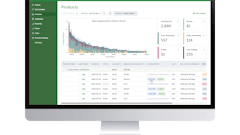Recently, the Department of Labor announced a new pilot program to resolve wage-hour violations more simply. Called the Payroll Audit Independent Determination (or PAID) program, this pilot program is scheduled to begin in April and last for six months. Presumably, it will then be renewed. The purposes of the PAID program are to promote self-reporting of Fair Labor Standards Act (FLSA) violations and early resolution of claims. Concrete contractors should be very wary of this new program.
Although nearly all employers will be eligible, the program cannot be used if an investigation or litigation has already begun. Also, the program cannot be used by repeat offenders.
Employers must conduct a thorough self-audit and then report the results to DOL’s Wage-Hour Division. This must include reporting the type or nature of the violation(s), the employee(s) affected, the duration of the violation(s), and the amount due to those affected. If the WHD agrees, the affected employees are notified and requested to sign a waiver of litigation. If the employee signs the settlement agreement, then the employer must pay the amount the WHD has determined is owed.
There are some advantages or benefits from this program. First, claims can be resolved much faster than the “normal” route where the agency investigates and ultimately reaches a determination. This should make the process more efficient and affordable for employers. Second, PAID settlements would not include liquidated damages or civil money penalties. Third, an employer may avoid significant litigation expenses and attorney fees. But there are also risks.
First, many employers are understandably reluctant to volunteer to a federal agency that they have violated the law. It is also unclear whether current information sharing agreements between the WHD and about one-third of state labor agencies would trigger a separate audit at the state level. Even if PAID program data is not shared with state agencies, the WHD settlement agreement may not apply to separate state-level claims, and many states have wage and hour laws that are more strict than the FLSA.
Second, affected employees can choose to reject the PAID settlement. This may be because they foresee a greater recovery in litigation where there is a possibility that they could get a liquidated damages windfall. It is unlikely that a plaintiff’s lawyer would encourage an affected individual to accept the PAID settlement.
According to what the DOL has published so far, there is no general release associated with a PAID settlement. Instead, the release that the WHD will offer the employee will only address the claim(s) identified and paid for by the employer. Thus, employees may reject the PAID and seek a larger award in litigation.
The PAID process may actually increase the risk of litigation. This is so for several reasons. The plaintiff’s bar is likely to encourage employees not to participate and may seek to establish class actions. Also, documents that the employer produces to the WHD may be discoverable through litigation or a Freedom of Information Act request, which will also increase the prospect of litigation. Moreover, as noted above, state law claims are not precluded by PAID settlements, so it is possible that the employer may pay out 100% of back wages under federal law only to be sued by the employee under state law. Employees who opt out of the PAID process may still file suit seeking liquidated damages – essentially double the back pay award. While not a huge risk where the back pay amount is relatively small, in a misclassification claim where the employee is claiming entitlement to overtime pay, the amount at stake can be much more substantial and doubling that amount may make the risk of litigation worthwhile.
Until DOL publishes more information about program eligibility, it will be unclear what happens to an employer that applies for the PAID program but is rejected by the WHD. Presumably, PAID program participation is not a confidential matter, so it is entirely possible that the employer seeking to resolve FLSA issues quickly and efficiently may wind up in protracted audits and litigation anyway.
The bottom line is that concrete contractors should “wait and see” what develops before plunging into a PAID program. The industry is rife with FLSA problems and a voluntary settlement program seems a welcome development. But, there are simply too many unknown risks to justify involvement just yet. Also, it is not clear what requirements the WHD will dictate for employer self-audits. The best advice: wait.



![Fcp Racatac Chair 10893876[1]](https://img.forconstructionpros.com/mindful/acbm/workspaces/default/uploads/2025/10/fcp-racatac-chair-108938761.10l0At5WXv.png?auto=format%2Ccompress&bg=fff&fill-color=fff&fit=fill&h=100&q=70&w=100)








![Fcp Racatac Chair 10893876[1]](https://img.forconstructionpros.com/mindful/acbm/workspaces/default/uploads/2025/10/fcp-racatac-chair-108938761.10l0At5WXv.png?ar=16%3A9&auto=format%2Ccompress&bg=fff&fill-color=fff&fit=fill&h=135&q=70&w=240)






